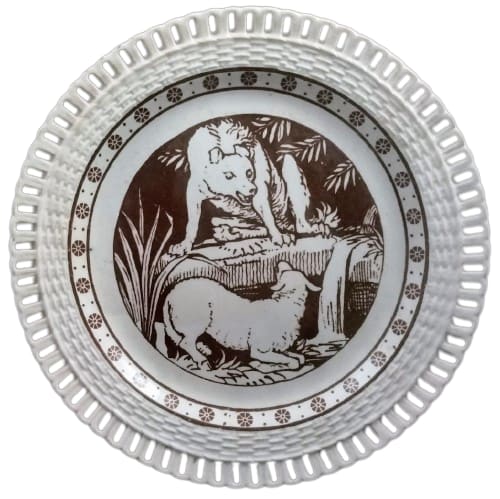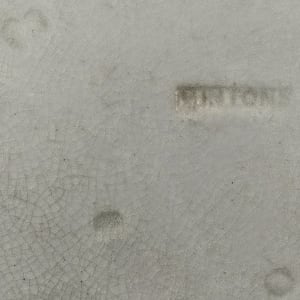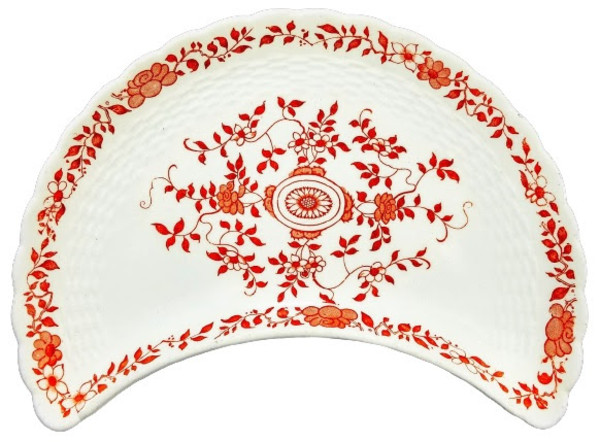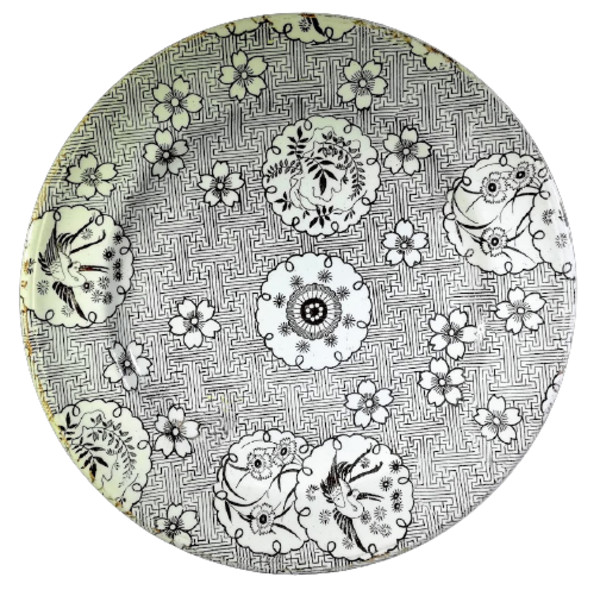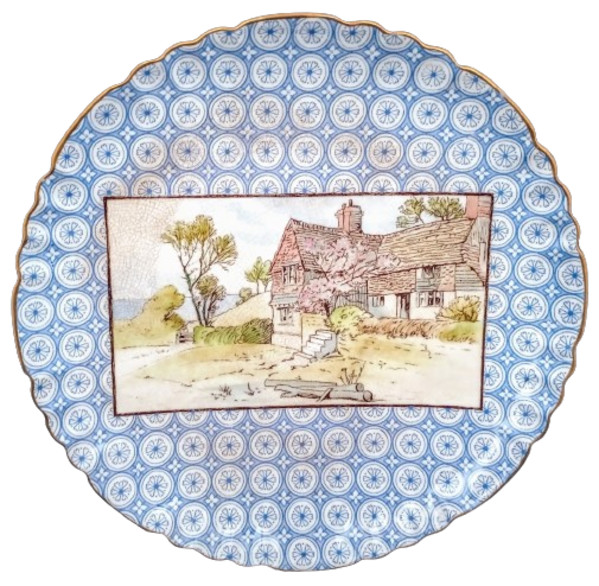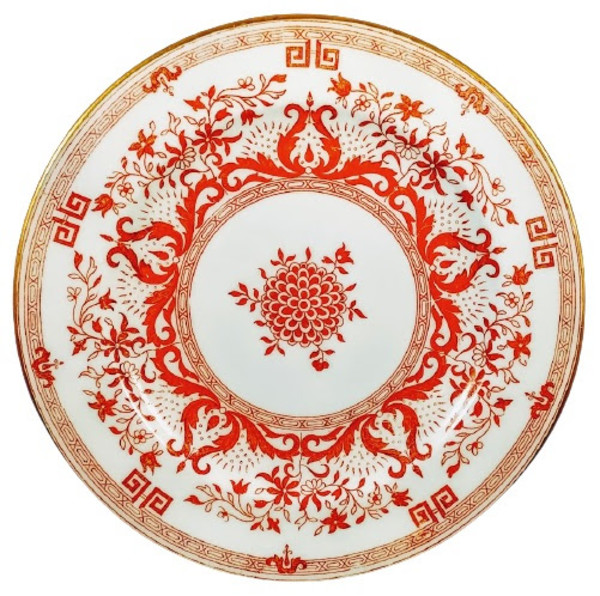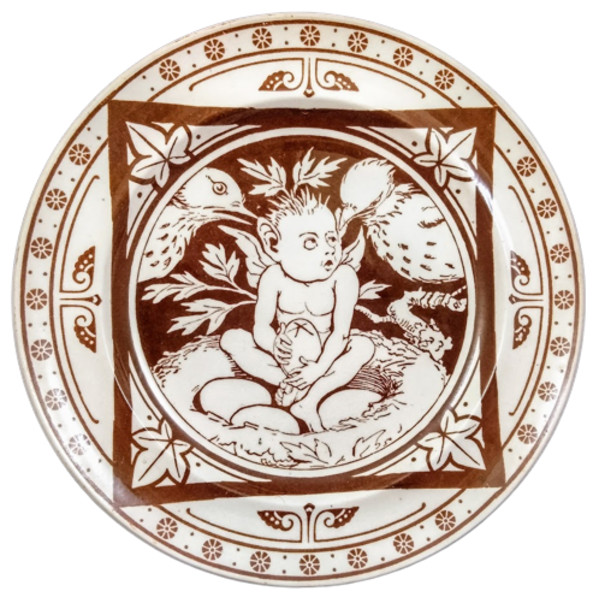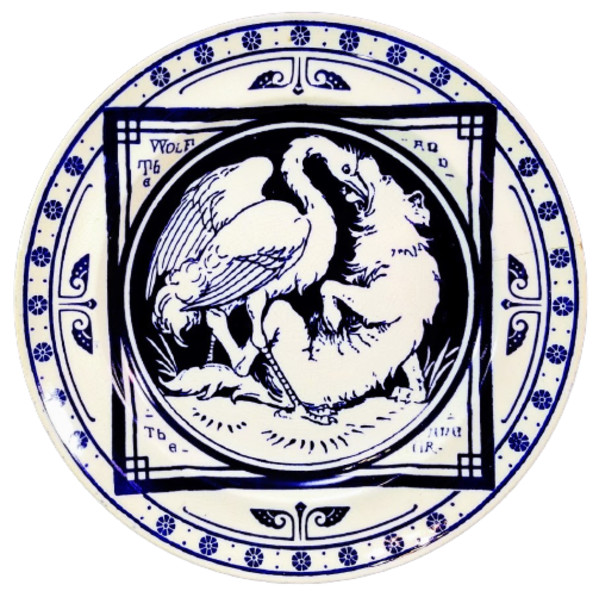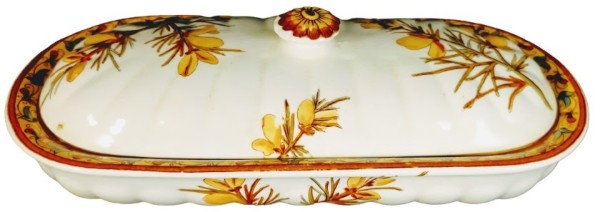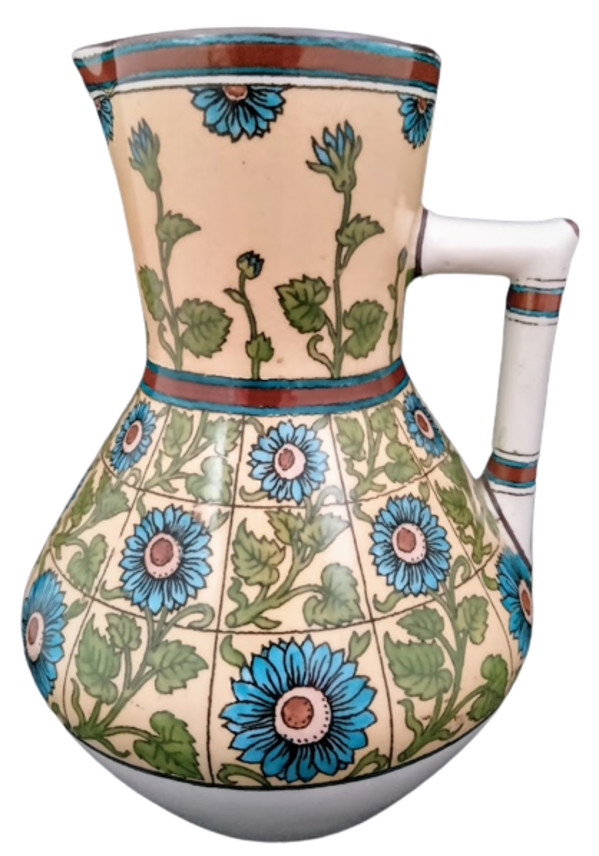Plate, 9 inches diameter. Brown transfer. Impressed maker's mark for Mintons. This pattern comes from a series of twelve Aesop's Fables produced by Mintons China Works for tiles. Both Mintons and Wedgwood extended the use of their tile patterns by incorporating them onto plates and other pieces in a dinner service. This pattern represents the fable "The Wolf and the Lamb."
Thomas Minton started the business in 1793 and since then there were many partners and company names. In 1849 Colin Minton Campbell joined Herbert Minton (his uncle and the son of Thomas Minton) and Michael Daintry Hollins and the business traded as Minton & Co. In 1849 Herbert Minton engaged a young French ceramic artist, Léon Arnoux, as art director and he remained with the Minton Company until 1892. This and other enterprising appointments enabled the company to widen its product ranges, one of the first innovations being the very colorful and highly successful majolica ware launched at The Great Exhibition of 1851. Colin Minton Campbell and Michael Daintry Hollins were also in partnership with Robert Minton Taylor as tile manufacturers trading as Minton, Hollins & Co. When Herbert Minton died in 1858 Colin Minton Campbell took over direction of the firm. The partnership with Hollins was dissolved in 1863, Colin Minton Campbell taking the china works and Hollins the tile works. From 1879 the business traded as 'Mintons.'
- Subject Matter: Aesthetic (Narrative)
- Collections: Aesthetic Transferware, Minton(s)
